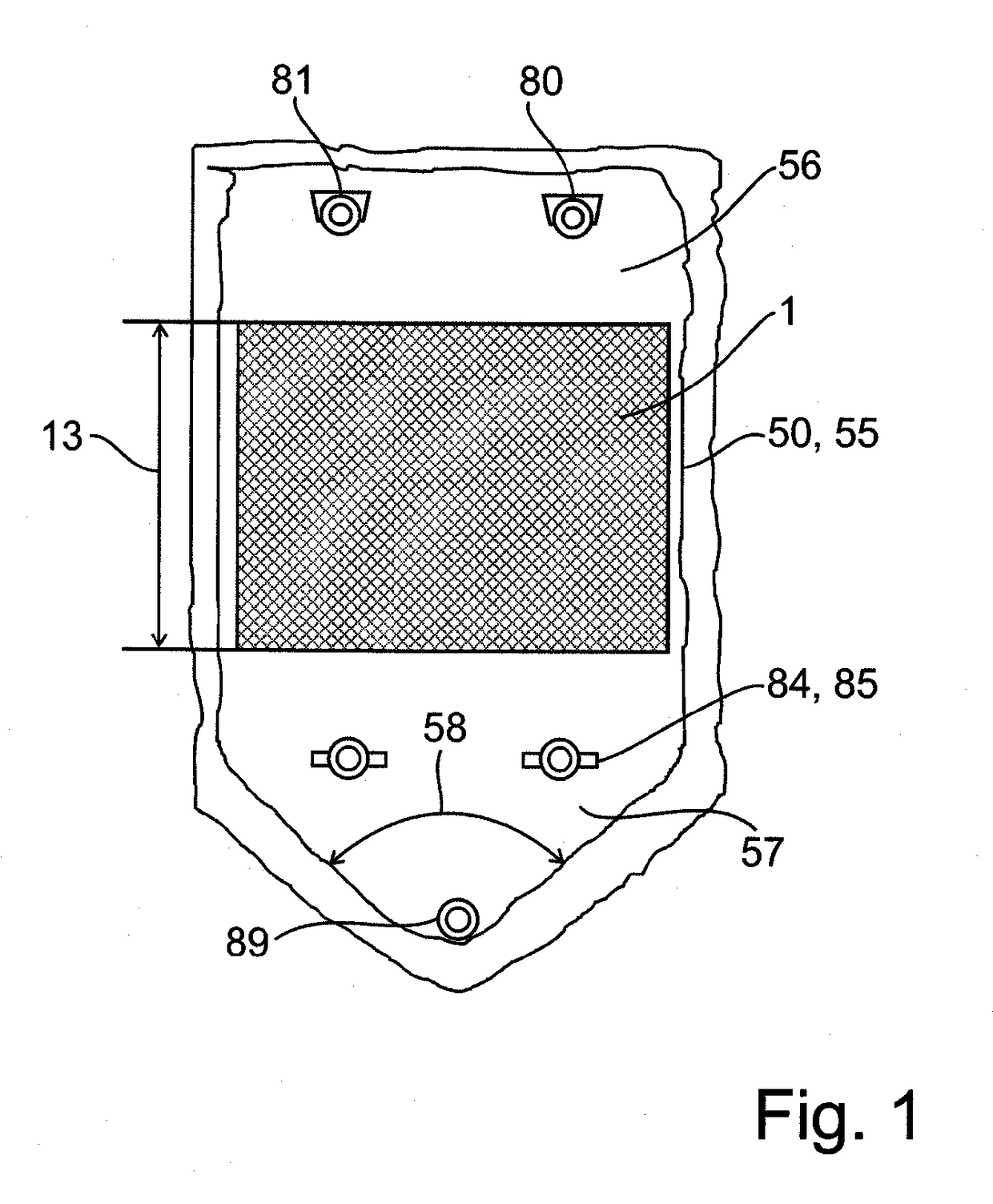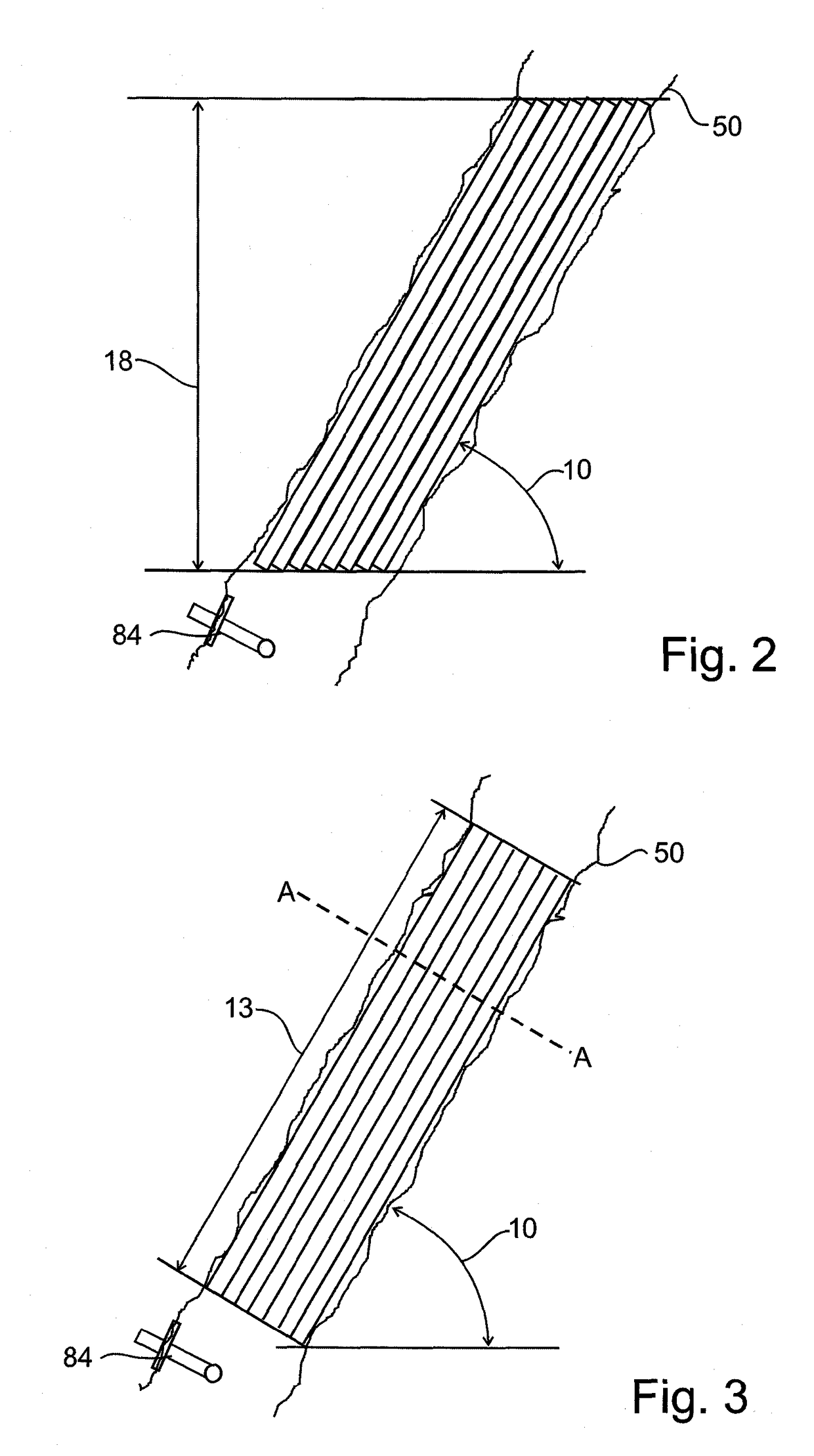One-way separator for retaining and recirculating cells
a one-way separator and cell technology, applied in the direction of apparatus sterilization, specific use bioreactors/fermenters, after-treatment of biomass, etc., can solve the problems of preventing reliable and maintenance-free long-term operation, preventing rapid flow across the membrane surface, and reducing the number of plastics introduced into the pharmaceutical process. , the effect of high rigidity
- Summary
- Abstract
- Description
- Claims
- Application Information
AI Technical Summary
Benefits of technology
Problems solved by technology
Method used
Image
Examples
Embodiment Construction
[0057]In a first embodiment (FIGS. 1 to 13), the elements of the disposable inclined channel solids separator according to the invention are fitted into a gamma-sterilizable plastic bag through which flow can pass. The plate stack 1 composed of single-layer or multilayer plastic web plates is introduced in the upper segment of the central region of the plastic bag. The plastic bag also delimits the harvest stream collection region 56 and the conically tapered solids collection region, with the solids collection region 57 preferably having an angle 58, 59 of from 10° to 60° with respect to the vertical. In the lower segment of the central region of the plastic bag, feed-throughs or fittings 84 exhibit a horizontal distributor 85 for uniform horizontal flow distribution of the cell culture solution (=feed) 74 via an infeed surface area 510.
[0058]In this embodiment, the aforementioned object is achieved by a disposable inclined channel solids separator for retaining and recirculating c...
PUM
 Login to View More
Login to View More Abstract
Description
Claims
Application Information
 Login to View More
Login to View More - R&D
- Intellectual Property
- Life Sciences
- Materials
- Tech Scout
- Unparalleled Data Quality
- Higher Quality Content
- 60% Fewer Hallucinations
Browse by: Latest US Patents, China's latest patents, Technical Efficacy Thesaurus, Application Domain, Technology Topic, Popular Technical Reports.
© 2025 PatSnap. All rights reserved.Legal|Privacy policy|Modern Slavery Act Transparency Statement|Sitemap|About US| Contact US: help@patsnap.com



